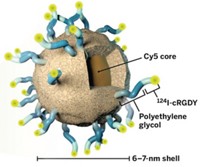Advertisement
Grab your lab coat. Let's get started
Welcome!
Welcome!
Create an account below to get 6 C&EN articles per month, receive newsletters and more - all free.
It seems this is your first time logging in online. Please enter the following information to continue.
As an ACS member you automatically get access to this site. All we need is few more details to create your reading experience.
Not you? Sign in with a different account.
Not you? Sign in with a different account.
ERROR 1
ERROR 1
ERROR 2
ERROR 2
ERROR 2
ERROR 2
ERROR 2
Password and Confirm password must match.
If you have an ACS member number, please enter it here so we can link this account to your membership. (optional)
ERROR 2
ACS values your privacy. By submitting your information, you are gaining access to C&EN and subscribing to our weekly newsletter. We use the information you provide to make your reading experience better, and we will never sell your data to third party members.
Biological Chemistry
Nanotubes pass in vivo test
December 4, 2006
| A version of this story appeared in
Volume 84, Issue 49
Individual, chemically unmodified single-walled carbon nanotubes (SWNTs) have passed the first in vivo test of their pharmacokinetics in a mammal (Proc. Natl. Acad. Sci. USA, DOI: 10.1073/pnas.0609265103). Scientists envision using nanotubes as chemotherapeutic agents, as contrast agents for diagnostic imaging, and in other biomedical applications. But first, they have to understand the behavior and fate of these foreign nano-objects inside the body. The initial results appear promising. Rice University chemist R. Bruce Weisman and his colleagues intravenously administered surfactant-coated SWNTs to rabbits and were able to track the tubes by observing their characteristic near-infrared fluorescence. The team found that blood proteins quickly displaced the surfactant coating on the nanotubes and that the tubes' concentration in blood serum fell exponentially, with a half-life of one hour. After 24 hours, significant levels of nanotubes were found only in the liver, as expected. The absence of acute toxicity and promising persistence of the nanotubes in circulation suggest they may have a future in pharmaceutical applications, the researchers say.





Join the conversation
Contact the reporter
Submit a Letter to the Editor for publication
Engage with us on Twitter